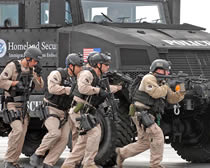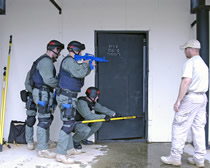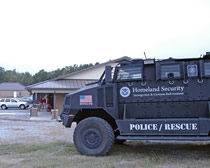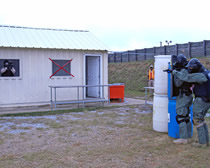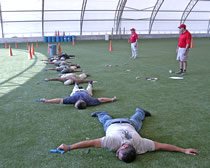TOP STORY: Special response teams prep for high risk situations at Ft. Benning
They serve warrants under hazardous conditions. They secure the airspace over the Super Bowl in Blackhawk helicopters. They go undercover to dismantle drug trafficking organizations. They even assist after a horrible tragedy like Hurricane Katrina. Their overriding goal is to protect public safety. The work of special response team (SRT) members is often grueling and so is the training they undergo at Georgia's Ft. Benning.
SRT training lasts three weeks and includes several components. Students must complete a 1.5 mile run in less than 12 minutes, drag a dummy for 25 yards, complete 30 pushups and transition over a six-foot wall in full tactical gear.
"We average a failure rate of five to six students out of 24 on the first day," said Steve Podaras, U.S. Immigration and Customs Enforcement's (ICE) National Tactical Coordinator. "Some people are meant for this, and some people are not. That's what this school does; it weeds people out."
Trainees are also required to meet certain shooting requirements and complete classroom lessons in various tactical disciplines, including: intelligence gathering, use of force and officer mindset.
As the training progresses, the students participate in force-on-force sessions, which create the most realistic training environment available.
"It's better to sweat now than bleed later," said Podaras. "That's why we try to simulate for agents what it will be like in the field when they serve an actual warrant."
Individuals attending SRT training are all existing ICE agents or officers. They must serve as field agents for three years to be considered. ICE currently has 22 deployable teams, each consisting of 16 to 18 graduates from the Ft. Benning program. Nearly 400 individuals have graduated from special response team training since it was created more than 15 years ago.


